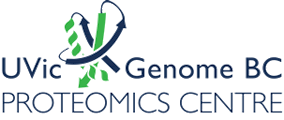Quantitative Metabolomics

Metabolomics Services
Metabolomics is the youngest family member of functional genomics, and is devoted to the identification and quantitation of as many small-molecule compounds (i.e., metabolites) as possible in biological systems. Metabolomics facilitates the detection of changes in metabolite concentrations in response to genetic modifications and environmental perturbations. The primary focus of our in-house metabolomics technology development is the design and validation of new and innovative analytical methods including UPLC/MRM-MS, UPLC/ultrahigh-resolution Fourier transform (FT) MS, and MALDI Imaging of tissues. These allow a more comprehensive and in-depth determination of metabolites and lipids in human blood, urine, cells, and tissues, as well as the quantitation of compounds such as naphthenic acids in environmental samples and various metabolites in plants. We are the University of Victoria node of the Genome Canada-funded TMIC (The Metabolomics Innovation Centre (www.metabolomicscentre.ca) and we provide both targeted and untargeted metabolomics services on a cost-recovery or collaborative basis, for domestic and international researchers, and industrial clients.
Targeted Assays
We use the latest generation ultra-high pressure liquid chromatography (UPLC) and triple quadrupole mass spectrometers to achieve the highest sensitivity and dynamic range possible.
Untargeted Metabolomics and Lipidomics
The goal of untargeted metabolomic and lipidomic experiments is to detect and identify as many small molecules as possible in a semi-quantitative manner. These hypothesis generating experiments can identify novel biomarkers of disease in animal, plant, and microbes and can help provide an understanding of biological processes at the molecular level.
Our ultra-high pressure liquid chromatography systems coupled to ion mobility, high resolution mass spectrometers help to ensure that we are confidently identifying as many compounds as possible.

